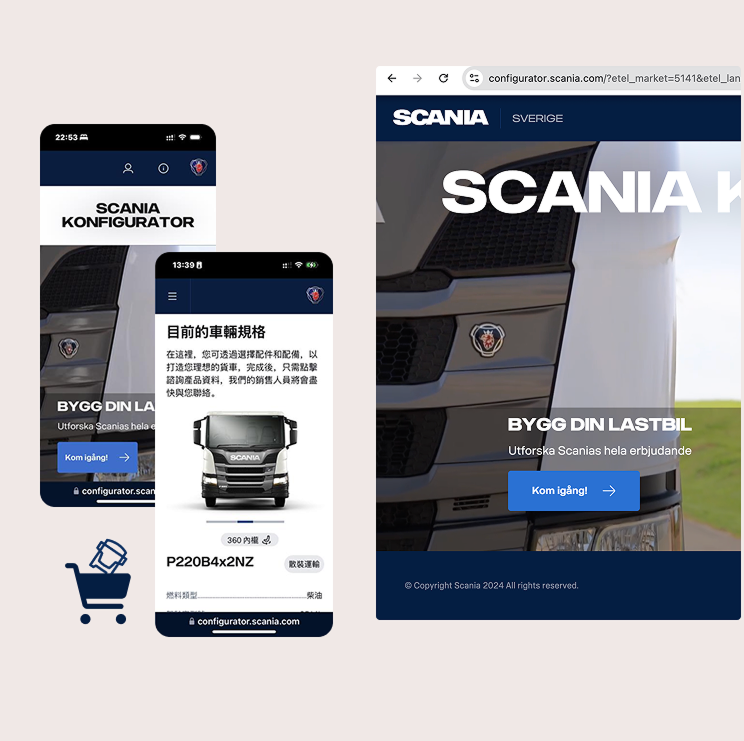


The Scania product configurator is a powerful yet complex tool used by thousands of global users to customize vehicles.
My challenge was to make the experience more intuitive and user-centered by aligning it with Scania’s brand identity and digital design system. This included creating a consistent look and feel across mobile and desktop
One of my key contributions was introducing a shopping cart-inspired concept that clearly showed what had been changed from the original vehicle setup.
This helped users track their modifications with confidence and added a sense of familiarity by drawing from common e-commerce behaviour's.

One of the first initiatives was to bring the configurator in line with Scania’s design system. The original UI had been built based on individual preferences rather than established guidelines, leading to inconsistency and confusion. I adapted and extended the design to fit into Scania’s design system and aligned mobile and desktop views — ensuring visual harmony, accessibility, and brand compliance across component's and screens.

To truly understand our users, I led a series of field visits and in-depth customer interviews, both in Sweden and internationally. We explored how customers use the configurator in real-world settings, what challenges they face, and what their mental models look like when configuring complex vehicles.
These insights were crucial to prioritising features and validating the overall user flow.
To complement qualitative research, we integrated Adobe Analytics and Mopinion for real-time usage data and user feedback. This enabled us to:
This combination of data and empathy drove our design roadmap and helped shift the team to a more insight-driven mindset.

As lead designer, I collaborated closely with a cross-functional team including developers, concept developers, product owners, and a junior designer whom I mentored throughout the project. My role involved: